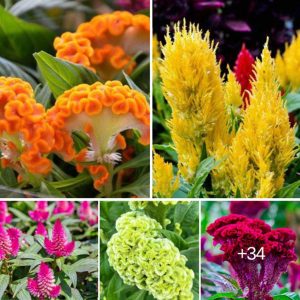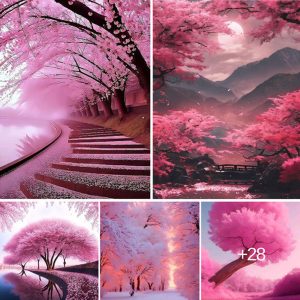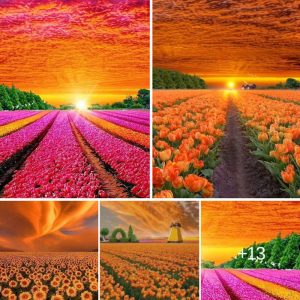As some parts of the California desert are enjoying once-in-a-decade “super blooms,” it reminds me of the joys of our own native wildflowers here in the Bay Area. From “Baby Blue Eyes,” Clarkias, and Gilias to “Tidy Tips” and Lupines, our local hillsides and meadows are a veritable carpet of colorful wildflowers starting in early Spring.

Native wildflowers play a valuable role in the life of pollinators, too – especially native bees and butterflies attuned to the timing of their nectar-rich flowers. This is also true when we add native annuals to our gardens. These sun-loving plants not only beautify our urban and suburban landscapes but collectively provide a widespread source of nectar and larval foods for a bounty of native fauna.
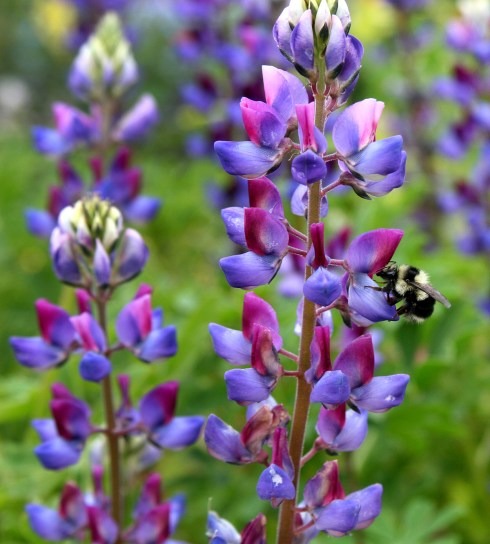
It’s easy to fold native wildflowers into your garden. Here in the Bay Area, gardeners who got a jump on the Spring season by planting in Fall may already be enjoying the earliest blooms, but there is still plenty of time to plant and fill in bare spots with colorful, spontaneous additions. I always leave some space open as Spring approaches, knowing I’ll be adding my favorite wildflowers. Most of these plants have a 3-5 month season, so you can use that space later for another colorful annual or perhaps an exciting new perennial. Many of our native wildflowers self-sow, too, so you’ll enjoy them year after year.
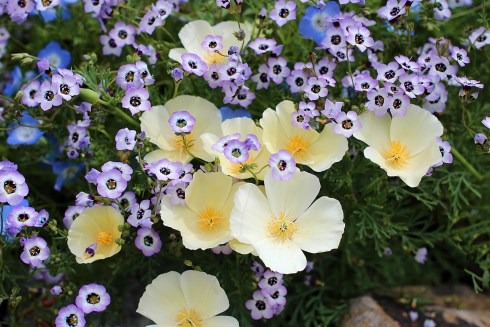
I also decide ahead of time that some of my annuals will reside in pots. I put nearly all of my perennials (native and otherwise) in beds so they can get established and spread out. Planting annuals in containers not only saves valuable ground space but also gives you the flexibility to move your containers around for the greatest visual appeal.
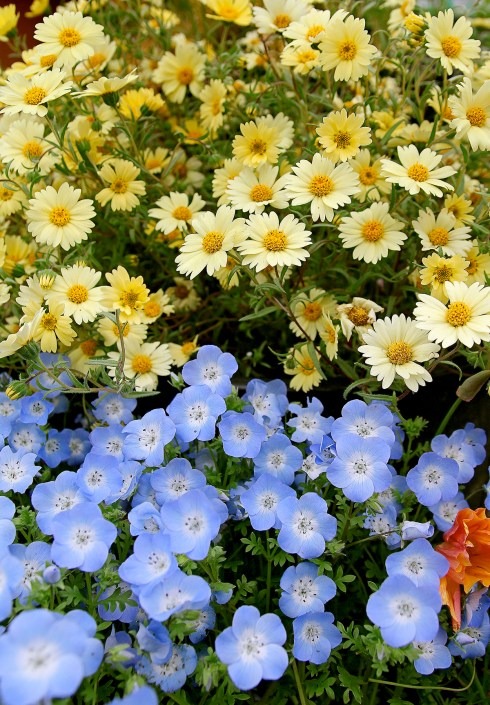
Maximizing Space
To maximize space, you can plant early blooming Spring natives in front of deciduous shrubs like Philadelphus, Hibiscus, Oakleaf Hydrangea, or Sambucus. One other space-saving tip is to plant annuals over bulbs, especially Summer bloomers like Dahlias, Lilies, and Gladiolas. You’ll enjoy a burst of color in Spring, then as the flowers fade, the Summer bulbs will push through and offer their own delights.
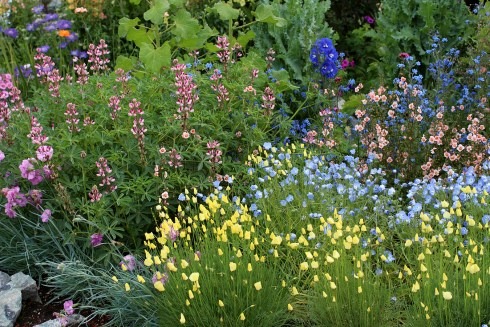
Going for the Gold
With their wealth of yellow and blue flowers, Spring wildflowers offer two contrasting colors that look fantastic together. “Tidy Tips” (Layia platyglossa) boasts fragrant, lemon-yellow flowers tipped in white that are the epitome of cheerfulness.
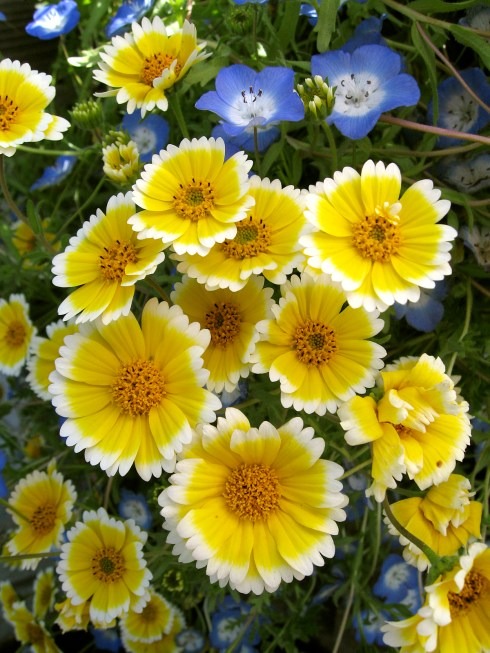
Keep an eye out for the Checkerspot butterfly, which loves this flower’s nectar. There’s also “Woodland Tidy Tips” (Layia gaillardioides), valued for its solid mass of #2 pencil yellow flowers that spill over a favorite container or a low rock wall.

I like to think of Limnanthes douglasii as a kissing cousin to “Tidy Tips.” Featuring a never-ending fountain of open-faced, yellow flowers generously rimmed with white atop a dense, shiny, ground-covering mound, this aptly named “Meadow Foam” blends beautifully with all manner of blue flowers.
“Cream Cups” (Platystemon californicus) produces smaller, butter-yellow flowers with a central boss of flattened stamen filaments that make them look like water lilies that washed ashore. Charming and fragrant!
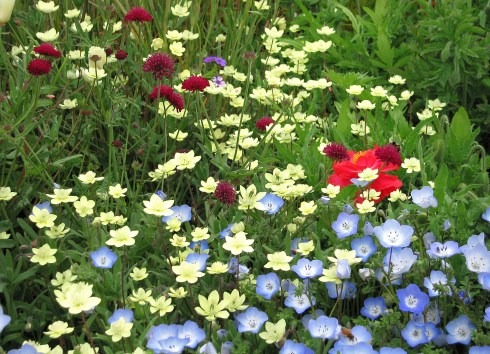
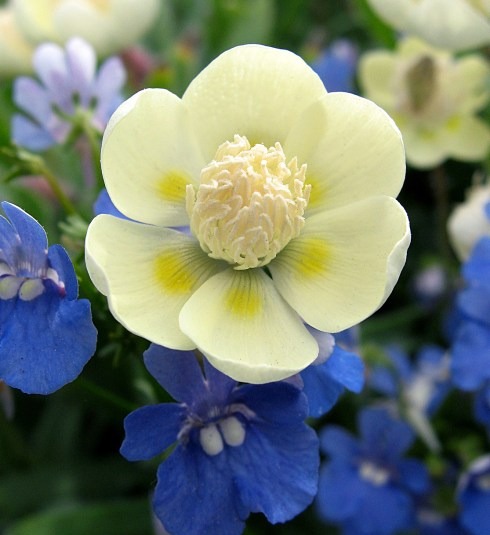
Speaking of fragrant, check out Madia elegans. This hardy, drought-tolerant and long-blooming sun lover is fashionably late, blooming mid-Summer to Fall. The large, daisy-like yellow flowers and the foliage have a delicious pineapple fragrance, all the more noticeable when the weather is warm.
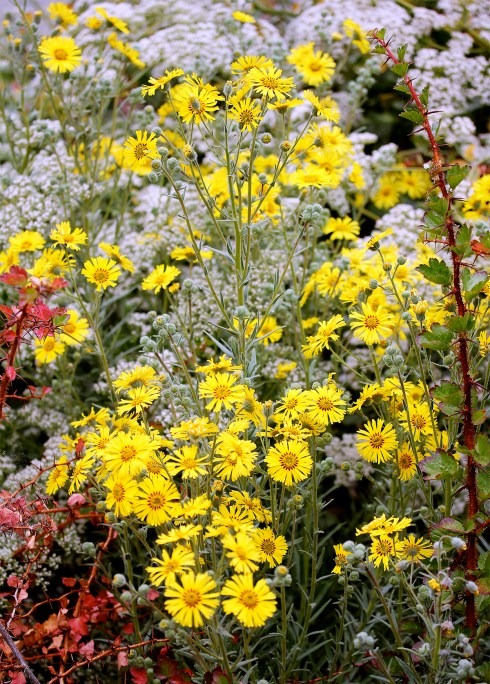
Do the Blues Make You Happy?
They will if you’re adding any of the exciting true blue wildflowers available this time of year. Start with Phacelias, a group that should be every bit as well-known as nemophilas “Baby Blue Eyes.” Their blue tones are darker and richer, especially stately P. Viscida. Showcasing 2”, electric-blue flowers with patterned centers, this 2’ tall, multi-branching native puts on quite a show.

Want cascading blue? Phacelia campanularia, known as “Desert Bluebell” (but grows just fine in regular garden soil), offers an endless display of gentian-blue inch+ flowers that tumble forward like the prettiest skirt. The distinctive leaves add a dark blush to their veined green form. Their motto might well be: ‘I spill, therefore I am.’

“Blue Thimble Flower” may seem like an odd common name, but one look at the wealth of inch-wide round flowers of Gilia capitata, and you’ll say “Oh, yes.” This annual forms a dense, small bush comprised of lacy, ferny foliage topped by a sea of purple-blue heads. Irresistible.
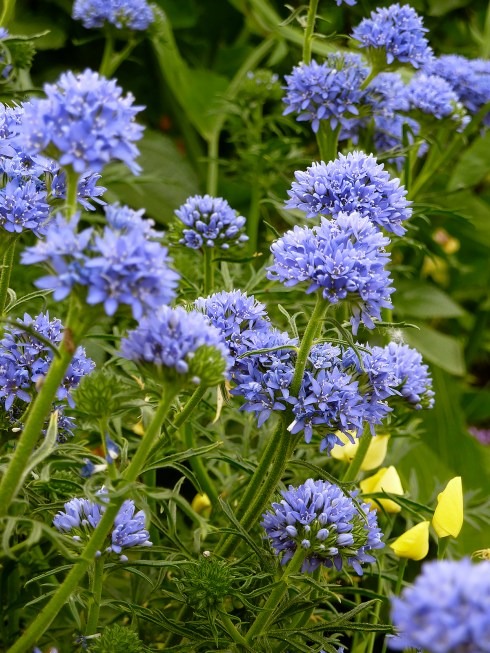
And lastly, there is the justly famous “Baby Blue Eyes” (Nemophila menziesii). No need to go looking for this gem; the masses of robin’s egg blue blooms will be one of the first things you and passersby spot in your garden. Another terrific spiller, it combines well with just about any Spring flower (especially any of the colorful selections of Eschscholzia californica), bringing a bit of sky into the earthly delights of your garden.

